A Humument
 I came by my copy of this unique work through a series of synchronistic connections. It started with one of those Amazon.com recommendations that keep popping up when you're not in the least bit interested, you know: 'customers who bought this item also bought this other one'.
I came by my copy of this unique work through a series of synchronistic connections. It started with one of those Amazon.com recommendations that keep popping up when you're not in the least bit interested, you know: 'customers who bought this item also bought this other one'. Last year two quite different parties at different times had told me I should check out Danielewski's House of Leaves, so in due course, having failed to cross paths with it in my day to day perambulations, I got around to looking for it on Amazon, and found: 'Customers who bought House of Leaves also bought Fate of the Artist by Eddie Campbell'. Well, I don't know how that mechanism works, but it did seem to me that the gods were slipping me a message. So, shortly afterwards when Hayley Campbell told me to get a hold of Woman's World by Graham Rawle and the Amazon machine paired it with A Humument, I was paying attention to the signs and I picked up that one too. I hasten to add that I have gone back to dismissing the recommendations, and Fate has gone back to being paired with assorted graphic novels, but meanwhile the two books arrived together, and I have already talked about Woman's World here.
A Humument by Tom Phillips is a 'treatment' of a copy of the 1892 novel, A Human Document by one WH Mallock, presumably selected mostly for its anonymity. Phillips has taken each printed page of the original and converted it to his own purposes. The process begins with the selection of words and phrases from the text on the page to arrive at a new text. The resulting new text is by turns poetic:
'the cakes and cream and- pleasures of life, and- butterflies-and her lips- her voice-and- words broken- And- my real- you'
and ribald:
'The Princess with effusion held out a wrinkled- pologe- Grenville - scanned the sofa- to see- Miss Markham,- raising her- dress- half parted'
 Phillips achieves this construction of new texts first by lassoing the word or phrase and then connecting it to the next by an umbilical cord, making a channel between words and lines using the white of the page. Then the unwanted parts are pictorially obscured. I said lasso there to avoid using the term 'word balloon' which I'd automatically use in another context, because there are places where Phillips wishes to allude specifically to that context as in his page 266, where he has found an amusing satirical text:
Phillips achieves this construction of new texts first by lassoing the word or phrase and then connecting it to the next by an umbilical cord, making a channel between words and lines using the white of the page. Then the unwanted parts are pictorially obscured. I said lasso there to avoid using the term 'word balloon' which I'd automatically use in another context, because there are places where Phillips wishes to allude specifically to that context as in his page 266, where he has found an amusing satirical text: 'bush- remember- bush- bush- remember that bitter name- remember him- that rude-stare-at- destiny'
The pictorial content of this page uses collaged images from American romance comic books. Elsewhere, painterly qualities prevail in a patient accumulation of both the abstract and representational.
 A Humument is a continually ongoing project for Phillips. Since treating that first copy of Mallock's book he has obtained other copies and started in again. An example of how he extracts two different texts from the same printed page may be seen by comparing the covers of the third and fourth (current) editions, which I've shown here.
A Humument is a continually ongoing project for Phillips. Since treating that first copy of Mallock's book he has obtained other copies and started in again. An example of how he extracts two different texts from the same printed page may be seen by comparing the covers of the third and fourth (current) editions, which I've shown here.The third reads:
'my poor little book- very rich for- eyes"
Using the same Mallock page as the base, in the fourth edition it becomes:
'as I come to- change half- my-little book- airy stories- journey- on---my-friend of-time- till very rich.'
You can find the earliest edition from the'70s online, (many of pages of which have survived into the latest edition), though the version at Rosacordis seems to be missing the large view option at the moment. Phillips' own site may supply that. At the beginning the artist's technique owed more to simple pen and ink. With time he came to use quite elaborate pictorial devices, and gouache paint, going so far as to recently include collage as mentioned above. You can see some of the more fully worked pages by altering the numericals in this url between 02 and 10
06 is an attractive self-portrait in gouache. The author introduces himself on page fifty, at fifty years of age::
'Play- the shadow of- fifty years- imagine only- a century- at last welcome- my own- my self I'
This page has been considerably altered since that version, as you can see in the most recent edition.
A Humument is usually described as an 'artist's book', a medium which perhaps begins with Max Ernst's collage novels. And within that medium the idea of altering earlier texts is not unique; there are some examples here (the 'Altered Page' exhibition) including somebody's 'treatment' of the Yellow Pages. A Humument has its own particular relationship to narrative. To begin with, the characters of the original novel exist as marine life beneath the typographical surface, their movements occasionally catching the light by way of a name selected by Phillips for his new texts. But there is more than that. Phillips contrives to create an entirely new character whose existence is not even hinted in the original. This is Bill Toge (his surname formed from the four-letter sequence found only in 'together' and 'altogether'), a casualty of love stumbling through the book.
'The shyness of -toge- he looked- under - her dress- -anemones arrested- him--- and a woman's well poised eagerness"
and:
'toge- accepted his -thrown value--and recognized yesterday- had to laugh'.
This, the underlying source text and a small assortment of visual cues, such as a window that Toge is usually sitting near to, even though there is no cartoonist's continuity about what Toge is suppose to look like, just a few typographical rules that hold him 'together', bind the 366 pages of the 'novel' into a singular reading experience. By the end of it, Toge and his neuroses are real enough. (Phillips once said that when he arrives in a new town he tends to check the phone book in the vague expectation of finding a real Bill Toge.)
Another relevant link: Exhibition of prints by Tom Phillips including some Humument variations.
For me one of the precious things about A Humument is that it is another example of the exciting developments in the world of The Book that I have written of here already, and of which Woman's World and House of Leaves etc. are also examples. It is occurring in the blurred areas between things. Phillips took a cheap printed novel and made it into an artist's book, foregrounding the aesthetics of painterly surface and of poetry. But in reintroducing narrative and character and incident, however loosely, he has gone halfway to reconverting it back into a novel, a different novel. A different kind of novel altogether, with pictures. For its daring in just existing, this book wins my respect, but for its sense of HUMour and its sense of the HUMan I will be keeping on my shelf as long as I have a shelf.
'go into the world toge- sing our times and seasons,- sing of childhood,- twilight- swing- toge- in the- opera- they- forgot'
Labels: new books (1)
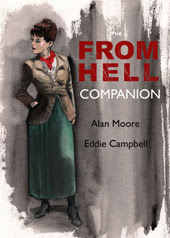


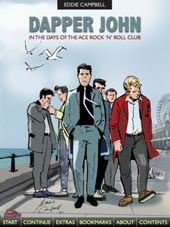
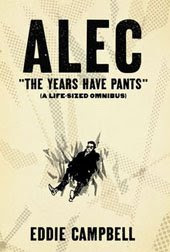
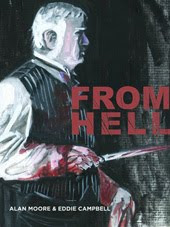
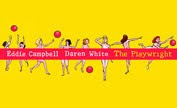
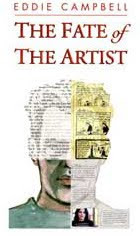
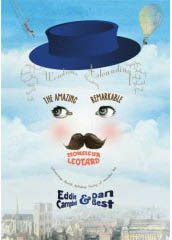





19 Comments:
One of my favourite living artists. I wrote something about his work last year:
http://www.johncoulthart.com/feuilleton/?p=805
Mr Phillips also inhabits the Blogger universe:
http://tomphillipsinfo.blogspot.com/
yeah! i had a similar roundabout experience with finding the book: I started doing these things called "newspaper blackout poems" and soon after Winston Smith and then Drew Dernavich and then a whole slew of other people said, "Good lord, you're ripping off A HUMUMENT."
thanks to john c -- i didn't know tom phillips had a blog!
Impressive stuff. I shall have to get a copy myself of this 'A Humument' book.
A little personal aspect from my own past efforts to take something from another context and put it into my own art:
In 1989 in University in Glasgow I self-published the first of five bookets of poetry. I would 'illustrate' the pages by randomly selecting books on introductory psychology and sociology in the University Library. I would let it fall open to whatever page, photocopy the image on it and put it in to my books, with the text on top. Some interesting results came up.
The best bit of 'artistic synchronicity' was when I was copying something in the photocopy room and happened to notice a printed paper from a text book that someone else had put in the bin. It was just an ordinary A4 sheet so I dont know why it caught my eye. Taking it out I saw that it had 6 short sentences in a row, with no apparent connection to eachother. They were intriguingly obscure and poetic lines, yet in very ordinary language, such as "A meal at home will always feel better." and "That was the day it all began." I decided then and there to cut these out and put them on the back cover of my first booklet.
Later I discovered that this sheet was from a Computer programming course and the 6 sentences were random 'meaningless' sentences that the student could type in while practicing inputting data. But even now - 18 years later - when I read those 6 lines on the back my first booklet, they feel wonderfully resonant.
One of my favorite books! It actually opened up a whole new art "movement". Altering books has been huge for several years now. Some are absolutely amazing and some aren't so amazing.
Of course this could open up a whole can of worms when someone says "desecrating a book is sacreligious" BUT if you worked at a bookstore like I did (many moons ago) and you saw how many books were thrown out (in the trash) on a daily basis...It's actually recycling and saving books.
But actually people have been cutting and pasteing things into their books for ages (think Grandmas with old family Bibles)...
Throwing out books ! Anathema !
Better indeed do some creative bowdlerisation or use them as part of paintings or sculptures.
Amazing artist.
I am thinking of this from the writing point of view and imagine a group of people given the same book and a bottle of black ink or paint. They would all come out with completely different stories, depending on which words they would decide to "save".
One of the things that makes Phillips' work different to those of other artists using books is that he keeps using the same book over and over! There's even a version of A Humument that's made from portions of the centre of each page, creating a miniature book from the larger text.
As Eddie mentions, A Humument is in its fourth version now. Phillips has used it as source material for his opera, Irma, and he frequently incorporates pages or single quotes into paintings and other artworks. His tenacity and dedication is remarkable. He's also a rare example of a contemporary artist who uses words inventively and artistically; see his Curriculum Vitae series for details.
John c mentioned: "...he keeps using the same book over and over!' to create these 'new' versions. This reminds me of the story by Jorges Luis Borges 'Pierre Menard, author of the Quixote' (from 'The Garden of Forking Paths', 1939) in which a 20thC man wants to 'reimagine' Don Quixote.
One version of the story is introduced with the words: "Pierre Menard, undertakes to compose Don Quixote - not another Quixote, but THE Quixote. His method? To know Spanish well, to rediscover the Catholic faith, to war against the Moors, to forget the history of Europe - in short, to BE Miguel de Cervantes. The coincidence then becomes so total that the 20thC author rewrites Cervantes's novel literally, word for word, and without referencing the original." Then adding that this 'new' version, though somehow magickally identical to the original, is 'infinitely richer'.
- Wonderful stuff!
Sorry - for anyone who is counting 'The Garden of Forking Paths' book came out in 1944, not 1939 as i wrote before.
Ah yes, Borges is another big favourite of mine, I know Pierre Menard well. I'm sure he would have been fascinated by the idea of the Humument, even if his eyesight wouldn't have been good enough to see it.
John - glad to hear of your liking for Borges. What an inspiration the man is. His jawdroping erudition makes me feel the kind of shame of ignorance that Eddie mentions in todays post and in the 'there isn't enough time to read all I want to read.' one too.
Borges and Kafka are my favorite writers. I have sometimes dreamed of doing some comic book versions of Borges's stories/sketches. But God knows HOW it could be done. The gaucho style stories, yes, but the literary/philosophical ones... perhaps impossible?
Like many of the posters, I have long loved A Humument and am glad to see you talking about it! (My own discovery of it came from an offhand reference to it in Douglas Hofstadter's Metamagical Thesis.)
I will say in reply to this, though:
You can find the earliest edition from the'70s online, (many of pages of which have survived into the latest edition), though the version at Rosacordis seems to be missing the large view option at the moment
... that while it is definitely worth going to look at the old edition, I think that in almost every case the revisions are improvements, and that the newer editions are simply much more powerful works than the older one. So I hesitate, a little, to recommend to people that they go look at the old one, since it sort of undersells the work.
Final note: Phillips has used pages from the same Victorian novel in other art projects, too, including (I believe) illustrations of Dante's Inferno -- his use of it actually goes beyond A Humument, although that's clearly the central part of his work with it.
John c
thanks for your link. deja vu. I read that before, I think months ago when i was running a google check before ordering the book. was going too fast to think about whose blog it was.
sean
ah yes, I am a longtime friend of the surprise find in the wastebasket at the library... and thanks for the Borges story! now, see there's another damn thing i have to read.
Stephen,
when I was casting around trying to figure out what a blog is and can be, I found your 'Best of the Blogosphere' series inspiring.
kelly, nathalie .. thanks as always for being around. austin too
Wow, thanks! Nice to know it's been read. (And I really haven't done one of those in a while, have I...?)
Meanwhile, let me second in the strongest way possible the recommendation for Borges's astonishing story "Pierre Menard, Author of Don Quixote". It may have first appeared in The Garden of Forking Paths, but these days you'll probably find it either in Ficciones (Borges's first story collection, which I believe incorporates all of The Garden of Forking Paths & then adds some), Labyrinths (a good 'best-of' collection), or the recent 'complete stories' volume. And once you're done, read others -- I recommend (among, well, more or less all of them) -- "The Library of Babel", "The Secret Miracle" and "The Garden of Forking Paths" are among my (other) favorites. But Pierre Menard is one of those guys who can change your life; definitely worth meeting...
About Pierre Menard - it occured to me that we are talking here as if he was a real guy. but he is, as far as i know, just a character that Borges made up.
BUT, then see this under his name on wikipedia:
"Juan Gustavo Cobo Borda claimed in a 1999 interview that there really was a minor symbolist poet by this name[Pierre Menard], and that Borges simply embroidered his story, rather than creating it out of whole cloth."
Stephen - good to know you are into him too. all those stories you mention are great gems of literature, yes. Looks like we have all started a wee 'Borges Appreciation Society' here.
Eddie - the Labyrinths collection of Borges that Stephen mentions goes on to say about the Pierre Menard story that: "...this subject, apparently absurd, in fact expresses a real idea: the Quixote that we read is not that of Cervantes, any more than our Madame Bovary is that of Flaubert. Each 20thC reader involunatarily rewrites in his own way the masterpieces of past centuries." Good stuff huh?
By the way, please sometime check out my new blog, which has examples of MY comics: http://sean-michael-wilson.blogspot.com/
the Borges story is online here
http://www.coldbacon.com/writing/borges-quixote.html
and it is as wonderful as you said.
eddie
Sean
checked your site.
some great work there.
i see why you were following up my remrks on balloons.
(the link was working, yes... 18 dec if not)
Tom Phillips did interesting articles about art and postcards related to classical music in the early years of the BBC Music magazine. I think those articles were collected as books as well.
When I was an editor of a computer magazine years ago, we spent a great deal of time coming to agreement on a style guide. To reach resolution, I threatened to declare "Ten Ever Lovin' Blue-eyed Years with Pogo" as the interim style guide for our publication.
Apropos of, Codex Seraphinianus (well, kinda...)
tom p (for it is he) says the best web version of a humument is www.humument.com (and new unpublished pages appear on my blog www.tomphillips.info) Meanwhile thanks for kind words eddie, and all of you & I'm still working on the next edition....
[A slideshow of the complete latest edition of A Humument is planned for www.humument.com any day now so do check back from time to time.]
Post a Comment
Subscribe to Post Comments [Atom]
<< Home